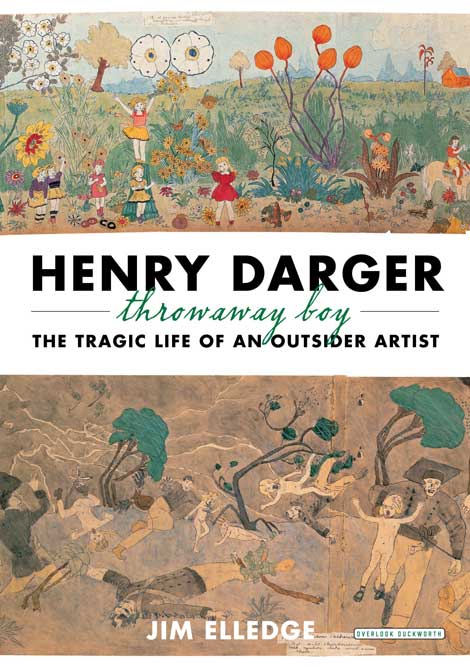Forty years after his death, Henry Darger remains one of America’s most polarizing artists. Given that he died unknown and virtually friendless, it is a testament to the power of his work that people are still arguing over what it all means. The very reason we know he existed is the stuff of myth. An elderly man, thought to be eccentric by those who encountered him, is taken to a nursing home. When the room in which he lived for decades is cleaned out, a giant trove of artworks and writing is discovered. The subject matter causes more than a little controversy. The artworks are eventually deemed to be illustrations for a massive book about a child slave rebellion. Many of the illustrations (which seem to focus on a group of little girls) feature nudity and scenes of especially vicious torture. The naked little girls have penises. A whole cottage industry emerged to interpret a body of work that still has the power to shock. With that cottage industry came a vested interest in keeping the work unfathomable and the artist crazy. A new biography of Darger sheds some light on how his work came to be, and in the process has become a controversial tome.
Critics over the past few decades have speculated that Darger was a pedophile, a sadist, a serial killer, and a very crazy man. Throwaway Boy looks at Darger through a new lens and offers us the simple theory that he was gay. The girls with penises are actually boys in dresses and the tortures might be Darger documenting things that happened to him. The author spent 10 years doing exhaustive research, and the results offer us a portrait of the world in which Darger was shaped. Not surprisingly, this theory is as polarizing as Darger’s own work.
The area where Henry Darger grew up was a destination for vice. The sidewalk in front of the flat he grew up in was a cruising area for homosexuals, and children under 10 were available for sex for pocket change. Henry’s father was elderly, alcoholic and widowed during the birth of his sister (who was given up for adoption). By the time he was 8, Henry was sneaking off to see a night watchman that he was “involved with.” The author makes a compelling case that the night watchman who died some 48 years later, was for that whole time the love of Darger’s life. This seems less farfetched when we are offered photos of the two of them posing together over a span of decades. There is also their correspondence. One of the things that can rankle the keepers of the crazy brand is the realization that Darger might have been a little more sophisticated and knowing than the myth lets on. He uses the lingo of the day that gay men used and in the later years when he was thought to be crazy, he shows a definite self-awareness in his writing.
One of the things that feeds the myth that he was less than all there was his institutionalization in a home for “feeble-minded children.” Researching the institution, the author discovered that not only were the residents not feeble-minded, but that some of them were adult prisoners being housed during a shortage of prison space. Further research showed that the institution used some of the techniques depicted in the torture (during a hearing about the place later). Darger’s children are often being choked, and one of the institute’s “minders” admitted to choking children with towels so as not to leave finger marks on their necks. Henry was institutionalized for masturbation, which was thought at the time to indicate homosexuality.
Once he was free of this horror house, he made his way back to urban Chicago, where he found a janitorial job that would support his growing art habit. In correspondence from this period he refers to work on his novel in a tone that implies that he thinks of himself as a writer. A strong case is made that what was perceived as his reclusiveness was actually a function of trying to hold down a very full-time job while devoting as much time as he could to his art.
Much of this book is spent explaining the realities of being gay during Darger’s lifetime. A very compelling case is made for Darger’s orientation. As a bonus we get a fascinating history of gay Chicago.
HENRY DARGER, THROWAWAY BOY:
The Tragic Life Of An Outsider Artist
by Jim Elledge
The Overlook Press, 2013
ISBN: 13: 978159020557


